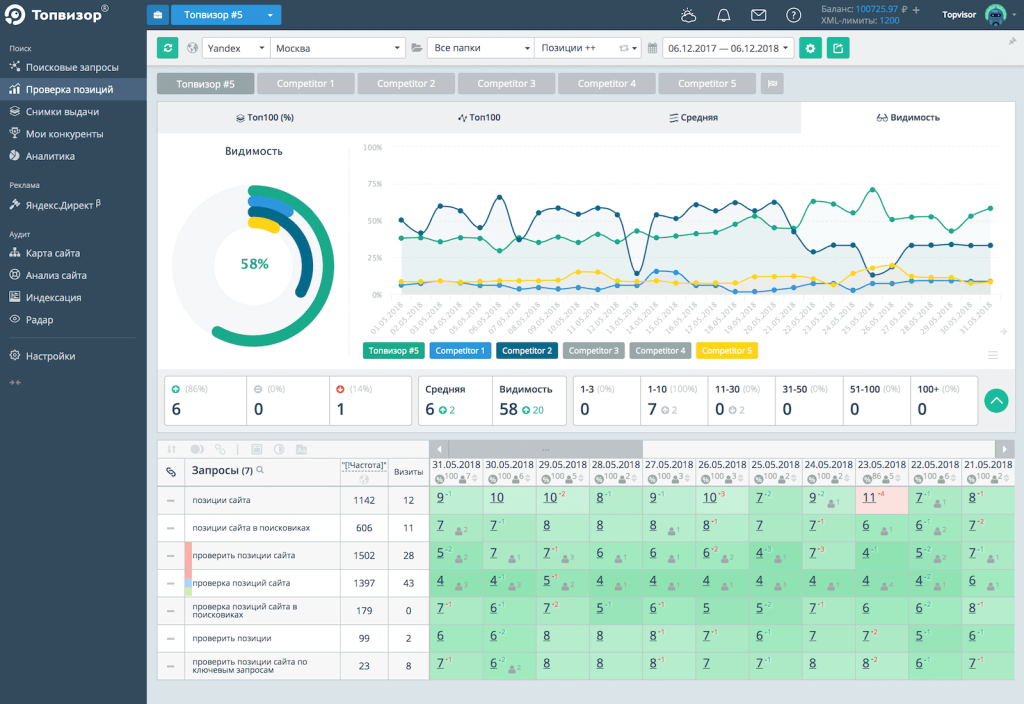Choosing a unique domain name
Choosing a unique domain name plays a vital role in building a recognizable brand and creating a first impression with users. When deciding what to name your website, it's important to consider several key aspects.
Firstly, a short and easy-to-remember domain name will make it easier for users to remember and find your website. This also helps your company's brand become more familiar.
Secondly, while using keywords in domain names was important for SEO in the past, modern search engine algorithms like Google's have shifted their focus to content quality and user experience, not just keywords in a domain. Therefore, when choosing a domain name, it's worth paying more attention to its uniqueness and branding.
For example, if you're creating a website for a company selling eco-friendly products, a domain name like "GreenHarmony.com" is more suitable than "EcoFriendlyProductsOnline.com." The former is shorter, more memorable, and better conveys the essence of the brand.

Although Google states that TLDs don't affect SEO, they are important for users to establish trust and a professional impression. The .com TLD remains popular and widely accepted, but other options such as .net, .org, and .io are also worth considering, depending on the nature of your business and domain availability.
Choosing the Right Website Platform
Choosing the right platform for your website plays a key role in its development, management, and future success. Understanding the features of different web platforms will help you choose the optimal solution for your needs. Here are some important points to consider:
Hosting platforms: These platforms offer easy-to-use solutions for creating and hosting websites. They provide ready-made templates, content editing tools, and site management without the need for programming. Examples of such platforms include Wix, Squarespace, and Shopify. They are ideal for small businesses and personal websites.
Standalone platforms: These include WordPress, Joomla, Drupal, and others. These platforms require a higher level of technical expertise to set up and manage, but they also offer greater flexibility and control over your site's functionality. WordPress, for example, is one of the most popular platforms due to its open source structure, rich functionality, and huge community of developers and users.
SEO plugins: One of the key advantages of WordPress is its extensive suite of SEO plugins that allow you to optimize your site for search engines. Plugins like Yoast SEO, All in One SEO Pack, and Rank Math provide tools for optimizing metadata, creating sitemaps, managing links, and much more.
Example: Let's say you have a small online store and want to launch it quickly and without unnecessary complications. In this case, Shopify might be an excellent choice due to its ease of use, ready-made templates, and integrated online sales features. However, if you're developing a blog or a corporate website where flexibility and control over functionality are important, WordPress might be a more suitable option, especially given its SEO capabilities and rich functionality.
Choosing a hosting provider for a new website
Choosing the right hosting for your new website is an important step that can significantly impact its performance, security, and availability. Here are some additional tips and factors to consider when choosing a hosting provider:
Server speed and performance: Fast website page loading plays a key role in user experience and search engine rankings. Therefore, it's important to choose a hosting service that provides high server speeds and optimized performance.
Scalability and resources: Make sure your hosting provides sufficient resources, such as disk space, bandwidth, and scalability, so your website can successfully develop and grow with your business.
Data backup and recoveryIt's important to have regular backups of your website data so that you can quickly restore it to working order in the event of a crash or data loss. Make sure your host provides reliable tools for automatic backup and recovery.
Example: Let's say you're building an online store targeting the US market, and the majority of your audience is in North America. In this case, you might choose a hosting service with servers in the US or Canada to ensure fast page loading for your customers. Also, make sure the host provides a free SSL/TLS certificate to ensure secure data transmission between your site and your visitors.

Setting up for Successful SEO
Besides setting up Google Search Console and Ahrefs Webmaster Tools, there are a few other steps you can take to ensure successful SEO for your website:
Meta tag optimization: Ensure that each page of your website has unique title and description meta tags containing keywords that accurately describe the page's content. This will help search engines better understand your content and display relevant results in search results.
Improving page loading speed: Optimize images, minify code, and use caching to speed up your website's page load times. Fast page loading is important for both user experience and search engine rankings.
Creating high-quality content: Produce informative and original content that will engage your audience. Try to create content that answers users' questions, solves their problems, and provides valuable information.
Example: Let's say you're creating a healthy lifestyle blog, and one of your pages is dedicated to back-strengthening exercises. In this case, when setting up for successful SEO, you might optimize the page's meta tags to include keywords like "back exercises," "healthy back," and so on, and ensure the page loads quickly so users can quickly access the information they need. Creating unique and informative content about the benefits and proper execution of these exercises will also help attract the attention of search engines and users.
Creating a logical website structure
When creating a logical website structure, it's important to consider not only user experience but also search engine requirements. Here are some helpful tips and examples:
Grouping by topic: Divide your website's content into sections and subsections based on their topic. This will help organize the information and make navigation more intuitive.
Example: If you have a website about a healthy lifestyle, sections could be dedicated to fitness, nutrition, mental well-being, etc.
Use descriptive URLs: URLs should be short, descriptive, and reflect the page's content. Avoid long and confusing URLs, and use hyphens to separate words.
Example: Instead of website.com/page123, use something like website.com/fitness-tips.
Creating a sitemapA sitemap is a file that contains a list of all the pages on your website. This helps search engines index your site more effectively and makes it easier for users to find the information they need.
Mobile Optimization: Consider mobile users when creating a responsive website design. This will help ensure a good user experience regardless of the device the visitor is using.
Example: When developing a website, use responsive design, which automatically adapts content to different screen sizes.
Creating a logical site structure and using descriptive URLs not only improves user experience but also contributes to better search engine rankings.
Selection and analysis of keywords
When selecting and analyzing keywords for your website, it's important to consider not only their popularity but also their relevance to your content. Here are some helpful steps and examples:
Use keyword research tools: Tools like Google Keyword Planner, SEMrush, Ahrefs, and Ubersuggest help you identify keywords related to your niche. They also show search volumes, competition, and other metrics that can help you make decisions.
Example: Let's say you run a healthy lifestyle blog. Using keyword tools, you might find queries like "healthy eating," "home fitness workouts," and "healthy recipes."
Analyze your competitors: Research the keywords your competitors are using, especially those that rank highly in search results. This will help you understand which topics and queries are in demand in your niche.
Example: When researching your competitors, you may find that many of them are using the keywords "healthy eating for weight loss" and "fat burning exercises."
Select a variety of keywords: Include a variety of keywords in your list, including informational, transactional, and navigational queries. This will help you attract different types of users and meet their needs.
Example: In addition to healthy eating queries, include exercise-related keywords, such as "workouts for beginners" or "pilates for muscle strengthening."
Monitor and update your keyword list: Continuously monitor the performance of your keywords and update your list to reflect changes in trends and your audience's needs.
Conducting keyword research will help you create optimized content that will attract your target audience and improve your positioning in search results.
Website distribution
In addition to content optimization and technical SEO, it's also important to actively promote your website to your target audience. Here are some helpful methods and examples:
Social media: Create profiles for your website on popular social platforms such as Facebook, Instagram, Twitter, LinkedIn, and others. Regularly publish engaging content that will engage your audience and promote your website through social media.
Example: If your site offers healthy lifestyle tips, you can share helpful tips on healthy eating, exercise, and mental well-being on social media.
Blogs and forums: Actively participate in discussions on blogs and forums related to your niche. Share your experiences, answer audience questions, and offer helpful advice. Don't forget to include links to your website where appropriate.
Example: If your site is about cooking, you can actively participate in recipe discussion forums, sharing your own recipes and inviting users to visit your website for more information.
E-mail: Create a newsletter or subscription to regularly inform your audience about new publications, promotions, or events on your site. This will help retain your audience and keep them interested in your content.
Example: Invite your visitors to subscribe to a weekly newsletter with the best recipes if your site is about cooking, or workout tips if your site is about fitness.
Distributing your website across multiple channels will help attract new users, strengthen engagement with your current audience, and increase the overall visibility of your website.
Performance tracking
Tracking the performance of your SEO strategy is key to continually improving results and achieving your goals. Here are some additional tips and examples:
Google Analytics: Use Google Analytics to track key metrics such as visitor numbers, traffic sources, user behavior, and conversions. This tool provides in-depth data analysis to help you understand how users interact with your website and what improvements are needed.
Example: Use Google Analytics to identify pages with high bounce rates or low user dwell time. This may indicate content or navigation issues that require your attention.
Search engine position monitoring: Use tools like Ahrefs' Rank Tracker or SEMrush to monitor changes in your site's keyword rankings and search results. This will help you understand which aspects of your SEO strategy are working well and where there's potential for improvement.
Example: If you've launched a new page with optimized content, use tools to track its search engine rankings. If you notice a positive trend in rankings, this may indicate that your content is being well-received by search engines and that users find it useful.

User reviews: Continuously collect user feedback on your website and its content. This can include direct feedback through contact forms or by analyzing comments on the website or social media. User feedback can help you identify issues that analytics tools haven't captured.
ExampleIf many users complain about the difficulty of navigating your site or the inconvenience of reading the content, this may be a signal to change the design or structure of your site.
Tracking performance allows you to not only evaluate the effectiveness of your current strategy but also take timely measures to improve your site and its search engine visibility.







